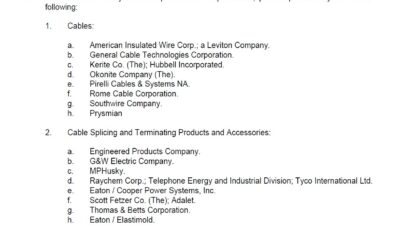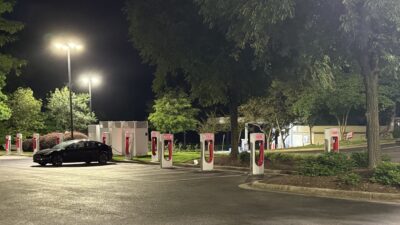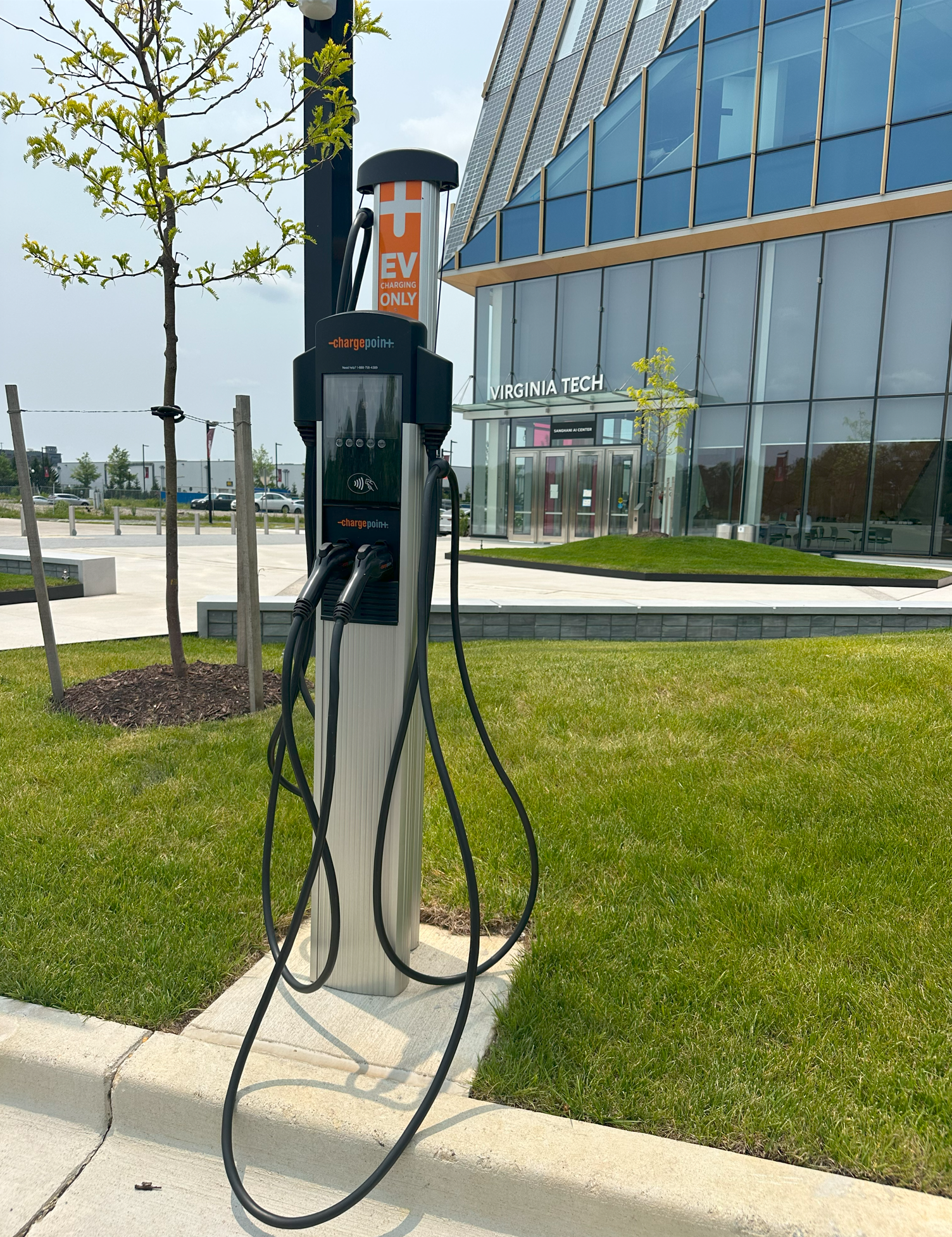
Located in Alexandria, Virginia, the Virginia Tech Innovation Campus Academic Building 1 (VT ICAB1) is a new building comprised of 272 total parking spaces. Of the 272 total parking spaces, 122 are located underground in two parking garage levels, and the remaining 150 are on-grade across several parking lots. Out of these 272 total parking spaces, 12 of the spaces were considered “EV Installed” – eight of the spaces being in the two parking garage levels and the remaining four spaces located outdoors in one of the parking lots. Out of the 272 total parking spaces, 18 of the spaces were considered “EV capable” and located across the two parking garage levels.
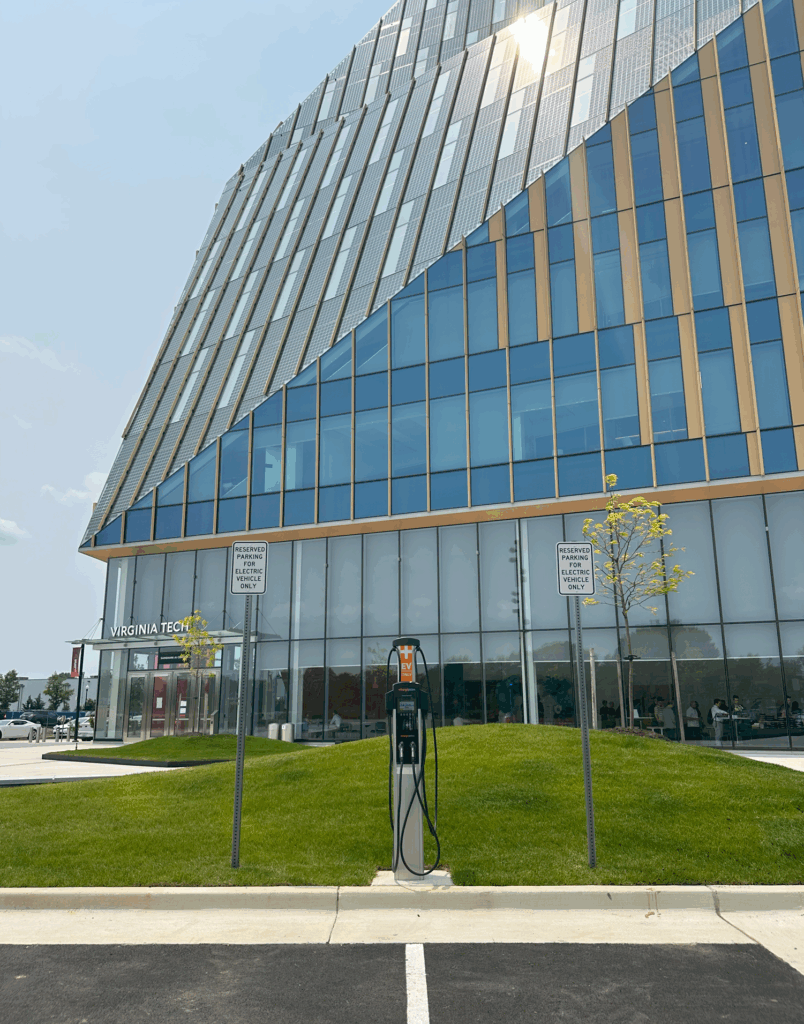
The following definitions help to explain the difference in EV readiness when designing EV charging stations:
- EV capable: The parking space is identified, but there is only a raceway installed from the parking space back to a suitable power source location.
- EV ready: The parking space is identified, raceway and electrical circuiting are completely installed, but there is a termination point at the space for EVSE to be installed in the future.
- EV installed: The parking space is identified, the raceway and electrical circuiting are completely installed, and the EVSE is installed and operational.
For this project, the LEED BD+C v4 New Construction – Location and Transportation: Green Vehicles Credit was awarded through “Preferred Parking Spaces” and “Option 1. Electric Vehicle Charging.” The credit requires either at least 5% of all parking spaces to be identified as preferred parking for green vehicles or to provide a discounted parking rate of at least 20% for green vehicles. With 30 parking spaces – 12 “EV installed” and 18 “EV capable” – identified as preferred parking for green vehicles, the preferred parking as a percentage of total parking capacity came to 11%, exceeding the 5% requirement. For Option 1, at least 2% of the total parking capacity must have EVSE installed to meet this credit. With 12 “EV installed” parking spaces, the parking spaces with EVSE as a percentage of total parking capacity came to 4%, exceeding the 2% requirement. Additionally, with Option 1 the EVSE must:
- Provide a Level 2 charging capacity (208 to 240 volts) or greater.
- Comply with the relevant regional or local standards for electrical connectors, such as SAE Surface Vehicle Recommended Practice J1772 or SAE EV Conductive Charge Coupler.
- Be networked or internet addressable and be capable of participating in a demand-response program or time-of-use pricing to encourage off-peak charging.
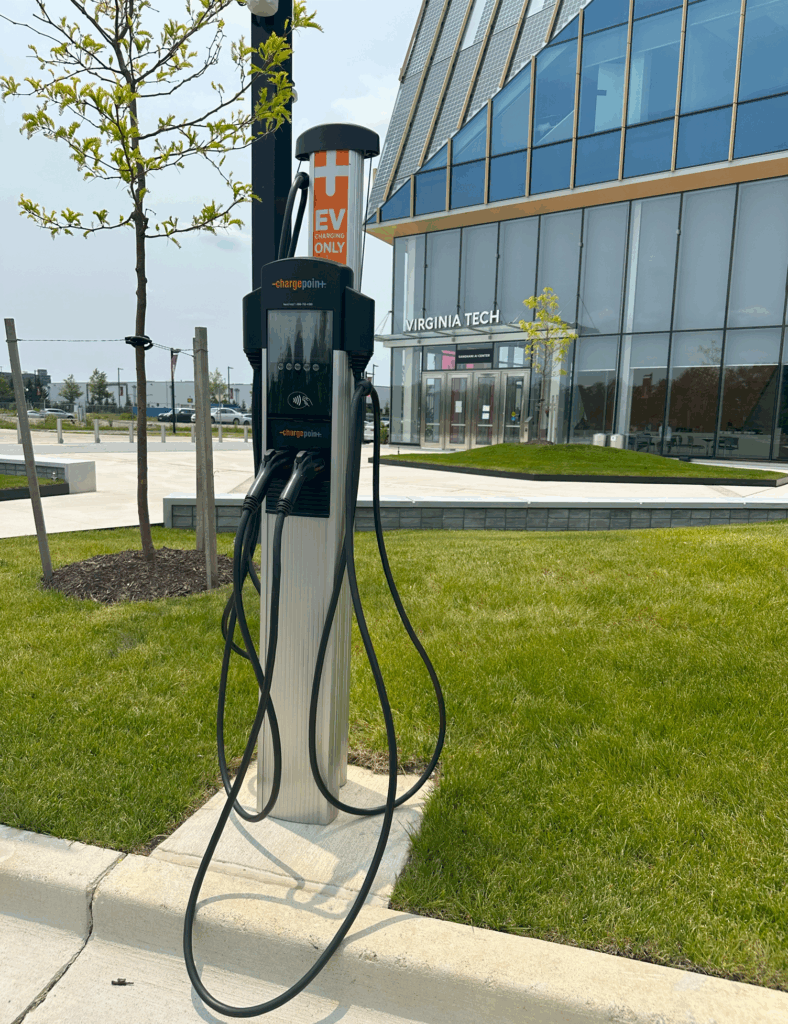
For this case study, six ChargePoint CT4021 (bollard mount) and CT4023 (wall mount) products provided dual port EVSE for the 12 “EV installed” parking spaces. The standard electrical input amperage consisted of 30 A for each charging port, requiring two 40 A, two-pole breakers for each EVSE at the upstream distribution board identified as “DPLVP1J”. These ChargePoint products comply with all LEED and NEC requirements.

